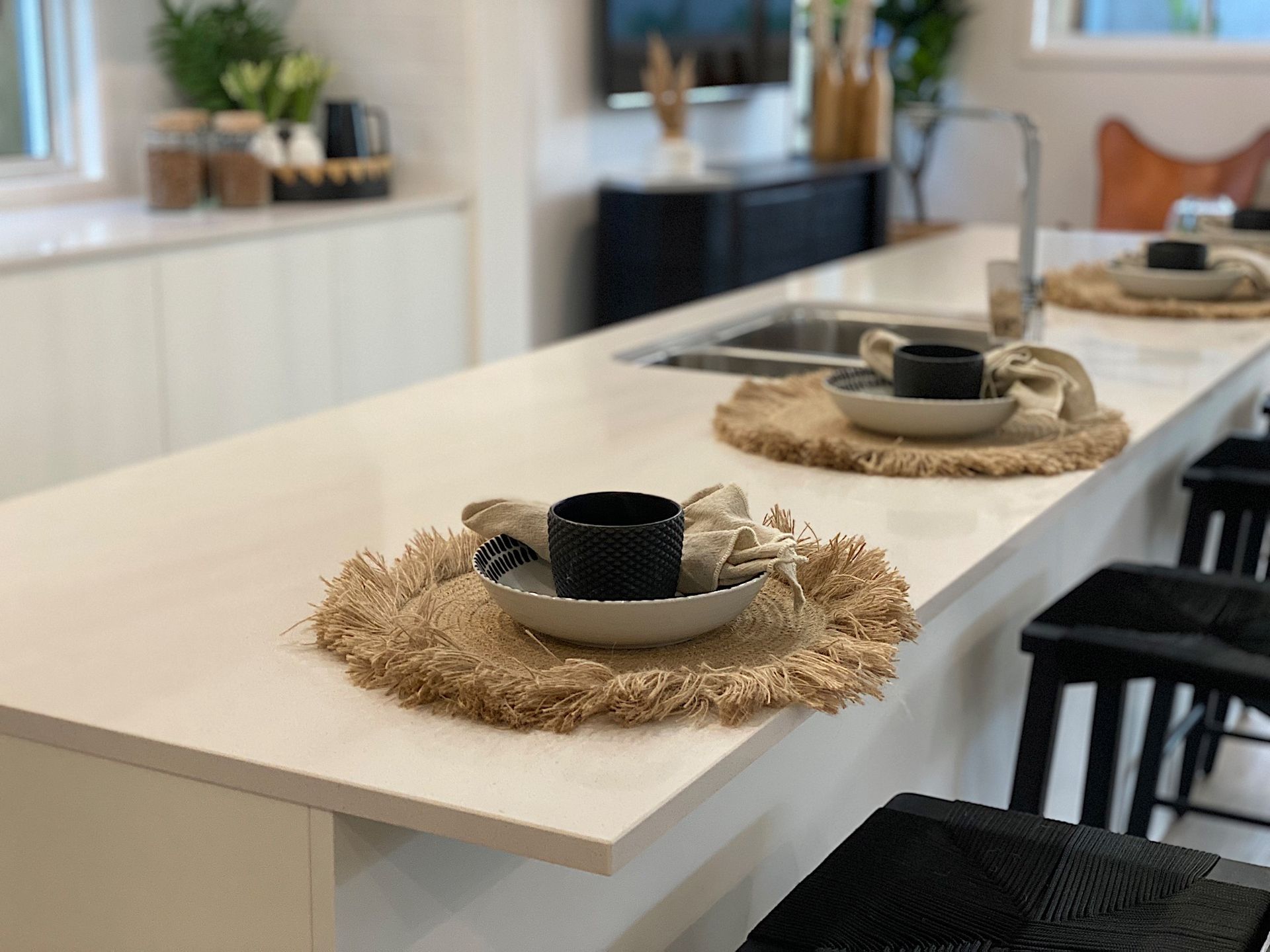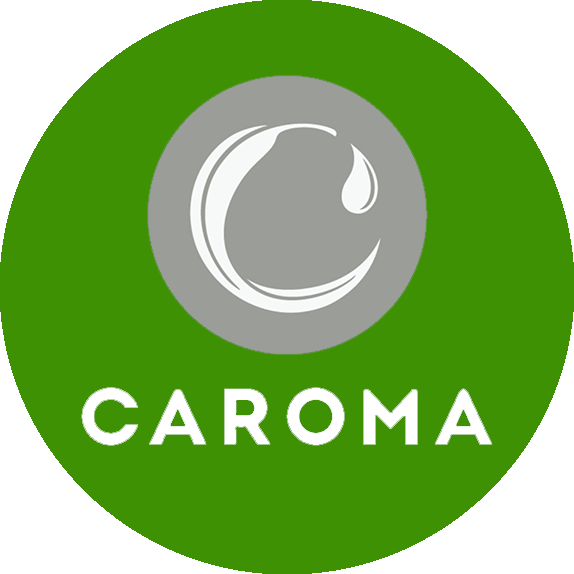The Ultimate Guide to Stone Bench Top Maintenance
Looking after your stone bench tops

Stone bench tops are an integral feature in many modern kitchens and bathrooms, blending durability, elegance, and timeless beauty. Whether you're preparing a meal in the kitchen or applying makeup in the bathroom, a stone bench top offers a durable, aesthetically pleasing surface that adds sophistication and functionality to your space. The natural beauty of stone also provides a sense of luxury, which is why many homeowners opt for materials like granite, marble, quartz, and composite stones. However, these beautiful surfaces require proper care and maintenance to keep them looking pristine.
In this article, we'll explore the different types of stone bench tops, offer expert tips on how to clean and maintain them, and provide advice on what to avoid to ensure your investment lasts for years to come.
Types of Stone Bench Tops
Stone bench tops come in various materials, each with its unique qualities. Let’s take a closer look at some of the most popular choices: granite, marble, quartz, and composite stone.
Granite: A Timeless Classic
Granite is a natural stone formed over millions of years from volcanic rock. Known for its resilience, granite is one of the hardest and most durable surfaces, making it perfect for kitchen bench tops that need to withstand heavy daily use. Its unique, natural patterns and rich colors make every granite slab distinct, adding an exclusive touch to your kitchen or bathroom.
Granite is primarily mined in countries like Brazil, India, and Italy, which are known for producing high-quality granite. The process of extraction involves cutting large blocks from quarries, which are then polished and cut to size for use as counter surfaces.
While granite offers exceptional strength and beauty, it does require periodic sealing to protect it from stains and moisture absorption. Regular cleaning and maintenance are essential to preserving its glossy finish.
Marble: Luxury and Elegance
Marble is a metamorphic rock that has been a symbol of luxury and sophistication for centuries. Famous for its elegant veining and wide array of colors, marble is often used in high-end homes and luxury properties. While marble's aesthetic appeal is undeniable, it does require more maintenance compared to other stone surfaces due to its porous nature. It can easily stain and scratch, particularly if exposed to acidic substances like wine, citrus, or vinegar.
Marble is mostly sourced from Italy, with regions like Carrara being world-renowned for their high-quality marble. The mining process for marble is labor-intensive and often requires manual extraction, followed by transportation to manufacturing facilities for cutting and polishing.
Quartz: The Engineered Alternative
Quartz is an engineered stone, created by blending natural quartz crystals with resin and pigments to form a versatile, durable material. Unlike granite and marble, quartz is non-porous, which means it’s highly resistant to stains and requires less maintenance. Quartz surfaces can be engineered to mimic the look of natural stone, such as granite or marble, but at a fraction of the cost.
Manufactured by brands like Caesarstone and Silestone, quartz is produced in facilities located worldwide, with large production plants in countries like Australia, the U.S., and Israel. The manufacturing process involves combining 90-95% natural quartz with resin and pigments, creating a strong, uniform surface that’s available in a wide range of colors and patterns.
Because of its non-porous nature, quartz doesn’t require sealing, making it a low-maintenance option compared to granite and marble.
Composite Stone: Affordable and Versatile
Composite stone surfaces, often referred to as engineered stone, are made by combining natural stone particles (like granite or marble) with resins and other materials. Composite stones like Caesarstone and Silestone are incredibly durable, available in a variety of colors, and provide an excellent balance between aesthetics and functionality.
These surfaces are manufactured in large production plants, combining stone particles, resins, and color pigments under high pressure and heat. This process ensures the material is strong, non-porous, and resistant to scratches, stains, and heat. Composite stones are an affordable option for homeowners looking for a high-end appearance without the high price tag of natural stones like granite or marble.
How to Clean Stone Bench Tops
Cleaning your stone bench top properly is crucial to maintaining its beauty and ensuring its longevity. Here are the best practices for cleaning each type of stone surface:
Granite Bench Tops:
Granite bench tops are relatively easy to clean but require some care. Follow these steps:
- Routine Cleaning: Use a mild dish soap solution mixed with warm water. Apply it to the surface with a soft cloth or sponge. Avoid abrasive sponges or steel wool, as they can scratch the surface.
- Stain Removal: For tougher stains, you can use a mixture of baking soda and water. Apply the paste to the stain and let it sit for about 15 minutes before wiping it off.
- Avoid Harsh Chemicals: Avoid using acidic cleaners like vinegar, lemon juice, or bleach, as they can erode the stone’s surface and remove its shine.
- Sealing: Granite is a porous stone, so sealing is necessary. It’s recommended to reseal your granite bench top every 1-2 years to maintain its resistance to stains and moisture.
Marble Bench Tops:
Marble bench tops require more delicate care:
- Routine Cleaning: Clean marble with a pH-neutral cleaner or mild dish soap solution and a soft cloth. Avoid using harsh chemicals or abrasive cleaners that can damage the surface.
- Stain Removal: For stubborn stains, use a mixture of baking soda and water, but be cautious as marble is more prone to scratching.
- Protect from Acids: Since marble is sensitive to acidic substances, clean up spills immediately. Avoid placing items like lemon, vinegar, or wine directly on the marble.
- Sealing: Sealing marble is essential to protect it from stains. However, even with sealing, marble still requires more frequent maintenance compared to other stones.
Quartz Bench Tops:
Quartz bench tops are very low maintenance due to their non-porous nature:
- Routine Cleaning: Simply wipe down the surface with warm water and mild dish soap. Avoid using harsh chemicals or abrasive sponges, as these can damage the surface.
- Stain Removal: Since quartz is non-porous, it’s resistant to stains. However, if a stain does occur, use a mild cleaner or a mixture of warm water and baking soda to remove it.
- No Sealing Required: Quartz doesn’t require sealing, which makes it a low-maintenance option for homeowners.
Composite Stone Bench Tops:
Composite stone is quite similar to quartz in terms of maintenance:
- Routine Cleaning: Use a soft cloth and mild detergent with warm water to clean composite surfaces.
- Stain Removal: Like quartz, composite stones are resistant to stains. However, if a stain occurs, clean it with a non-abrasive cleaner.
- Avoid Harsh Chemicals: Avoid using harsh chemicals that may dull the finish or damage the surface.
How Not to Damage Stone Bench Tops
While stone bench tops are durable, they are not indestructible. Here are some important things to avoid:
Heat Stress:
Placing hot pots, pans, or cooking appliances directly on your stone bench top can cause thermal shock, leading to cracks or discoloration. To protect your surface, always use trivets, heat pads, or wooden cutting boards to shield the stone from extreme heat. In fact, placing hot items on a thick wooden board is one of the best ways to protect your stone from heat damage. The wood acts as an insulator, preventing the direct transfer of heat to the stone, thus preventing potential cracks or discoloration.
Scratches and Chips:
Stone surfaces can be scratched by abrasive materials or sharp objects. Always use cutting boards to protect the stone from knives, and avoid using rough sponges, steel wool, or scouring pads, as they can dull the surface.
Staining:
While quartz and composite stones are resistant to stains, granite and marble are more vulnerable. Be sure to wipe up spills—especially oils, wine, and acidic substances—immediately to prevent permanent staining. Using coasters and placemats can also help protect your stone from staining.
Sealing:
Natural stones like granite and marble need to be sealed regularly to prevent moisture and stain absorption. Make sure to reseal your bench tops every 1-2 years, or as recommended by the manufacturer.
Maintenance Tips and Longevity
To ensure your stone bench tops remain in excellent condition:
- Regular Cleaning: Clean your surfaces regularly with mild soap and water to prevent grime buildup and stains.
- Resealing: Reseal natural stones like granite and marble to protect them from moisture and staining.
- Use Non-Abrasive Cleaners: Stick to soft cloths and non-abrasive cleaners to preserve the shine and finish of your stone.
- Minor Repairs: For small chips or cracks, consider contacting a professional to repair the damage. Avoid DIY repairs, as they can sometimes cause further harm.
Conclusion
Stone bench tops are an investment that adds beauty and functionality to your home. Whether you choose granite, marble, quartz, or composite stone, understanding the specific care requirements of each material will ensure your surfaces remain in pristine condition for years. Regular cleaning, sealing, and careful use will protect your bench top from damage, allowing you to enjoy its timeless beauty and durability. By following these maintenance tips, you can protect your investment and enjoy your stone bench tops for many years to come.
Reach out to our team by contacting us anytime below













